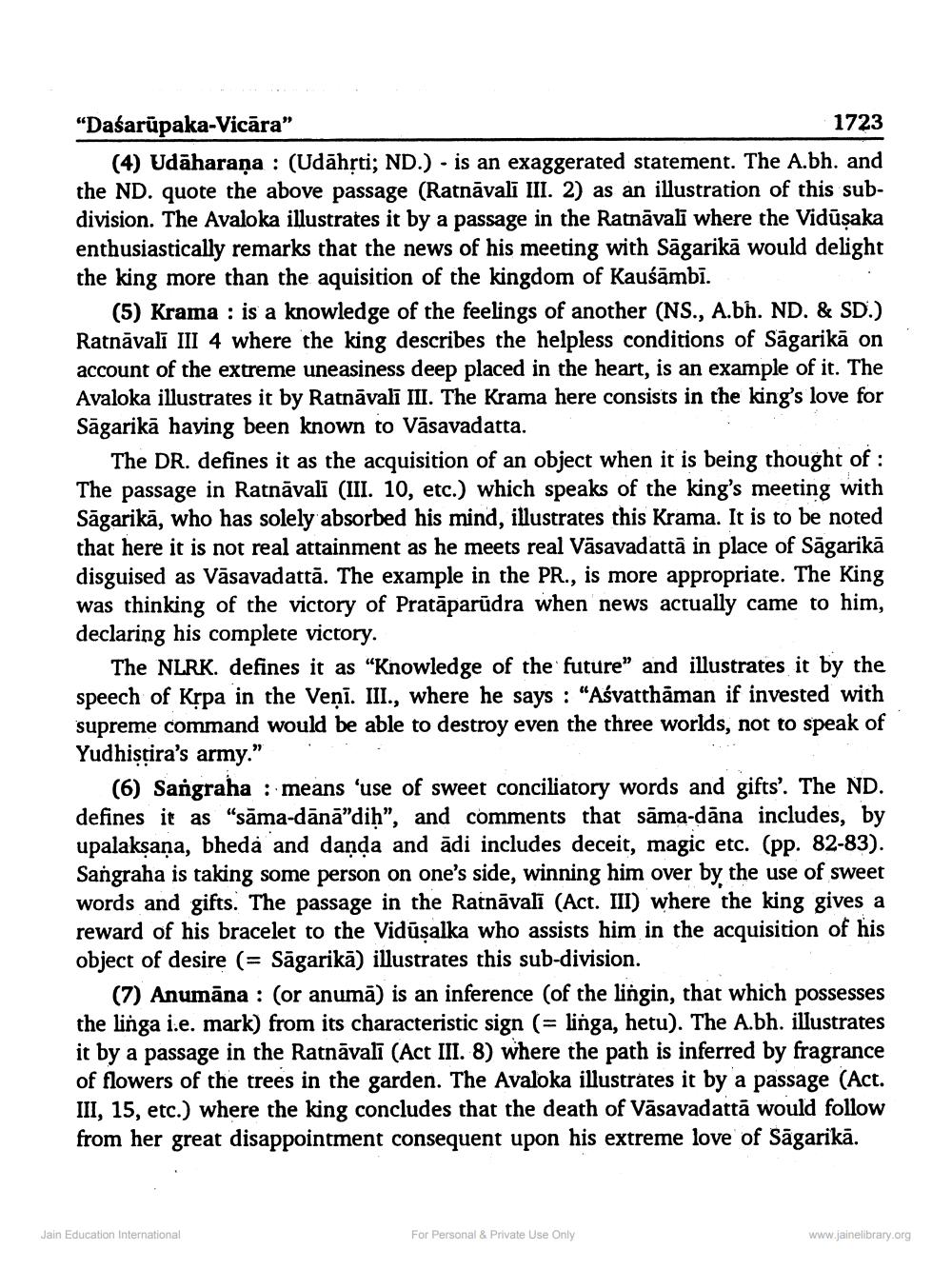________________
"Daśarüpaka-Vicāra"
1723 (4) Udāharana : (Udährti; ND.) - is an exaggerated statement. The A.bh. and the ND. quote the above passage (Ratnāvali III. 2) as an illustration of this subdivision. The Avaloka illustrates it by a passage in the Ratnāvali where the Vidūşaka enthusiastically remarks that the news of his meeting with Sāgarikā would delight the king more than the aquisition of the kingdom of Kauśāmbi.
(5) Krama : is a knowledge of the feelings of another (NS., A.bh. ND. & SD.) Ratnāvali III 4 where the king describes the helpless conditions of Sāgarikā on account of the extreme uneasiness deep placed in the heart, is an example of it. The Avaloka illustrates it by Ratnāvalī III. The Krama here consists in the king's love for Sāgarikā having been known to Vāsavadatta.
The DR. defines it as the acquisition of an object when it is being thought of: The passage in Ratnāvali (III. 10, etc.) which speaks of the king's meeting with Sāgarikā, who has solely absorbed his mind, illustrates this Krama. It is to be noted that here it is not real attainment as he meets real Väsavadattā in place of Sāgarikā disguised as Vāsavadattā. The example in the PR., is more appropriate. The King was thinking of the victory of Pratāparūdra when news actually came to him, declaring his complete victory.
The NLRK. defines it as “Knowledge of the future” and illustrates it by the speech of Krpa in the Veņi. III., where he says : "Aśvatthäman if invested with supreme command would be able to destroy even the three worlds, not to speak of Yudhistira's army.”
(6) Sangraha : means 'use of sweet conciliatory words and gifts'. The ND. defines it as "sāma-dānā”dih”, and comments that sāma-dāna includes, by upalaksana, bheda and danda and ādi includes deceit, magic etc. (pp. 82-83). Sangraha is taking some person on one's side, winning him over by the use of sweet words and gifts. The passage in the Ratnāvali (Act. III) where the king gives a reward of his bracelet to the Vidūsalka who assists him in the acquisition of his object of desire (= Sāgarikā) illustrates this sub-division.
(7) Anumāna : (or anumā) is an inference (of the lingin, that which possesses the linga i.e. mark) from its characteristic sign (= linga, hetu). The A.bh. illustrates it by a passage in the Ratnāvali (Act III. 8) where the path is inferred by fragrance of flowers of the trees in the garden. The Avaloka illustrates it by a passage (Act. III, 15, etc.) where the king concludes that the death of Vāsavadattā would follow from her great disappointment consequent upon his extreme love of Sāgarikā.
Jain Education International
For Personal & Private Use Only
www.jainelibrary.org




